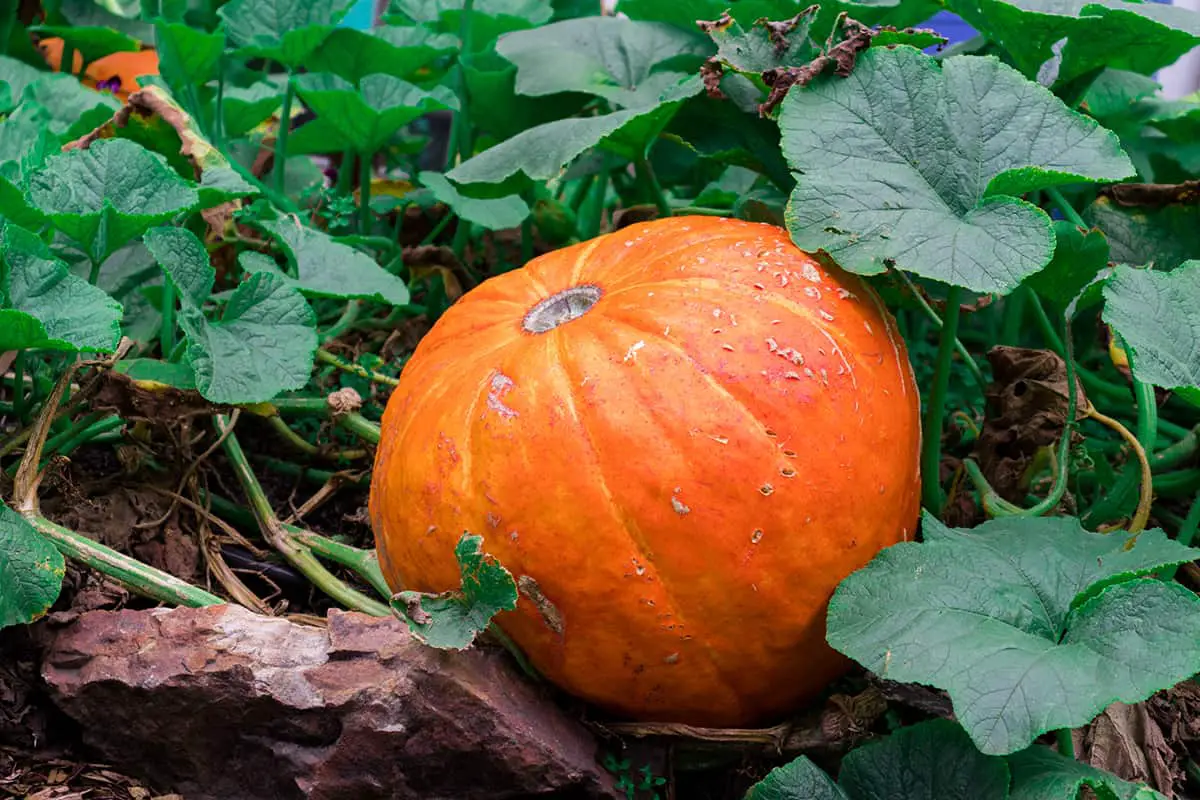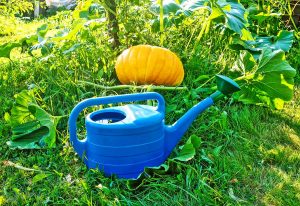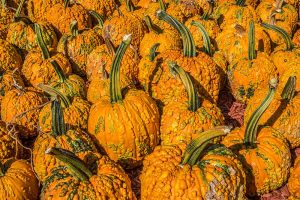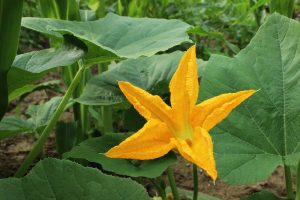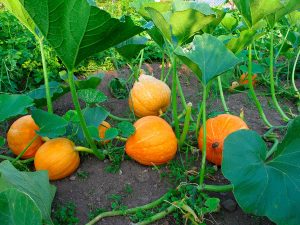Pumpkin plants (Cucurbita pepo) are widely grown for their iconic fruits that can be harvested in fall and are ready to be eaten or stored for the winter. They are easy to grow and care for, making them an ideal choice for beginner gardeners or families with young children who want to get involved in the garden. Although pumpkins grow easily, they do require certain conditions in order to thrive.
A sunny site is the best place for a pumpkin plant, as this will result in more flower production and a greater yield of pumpkins.
Here, we take a closer look at the lighting needs of pumpkin plants and reveal tips for optimum pumpkin vine care.
Table of Contents
How Much Sun do Pumpkin Plants Need?
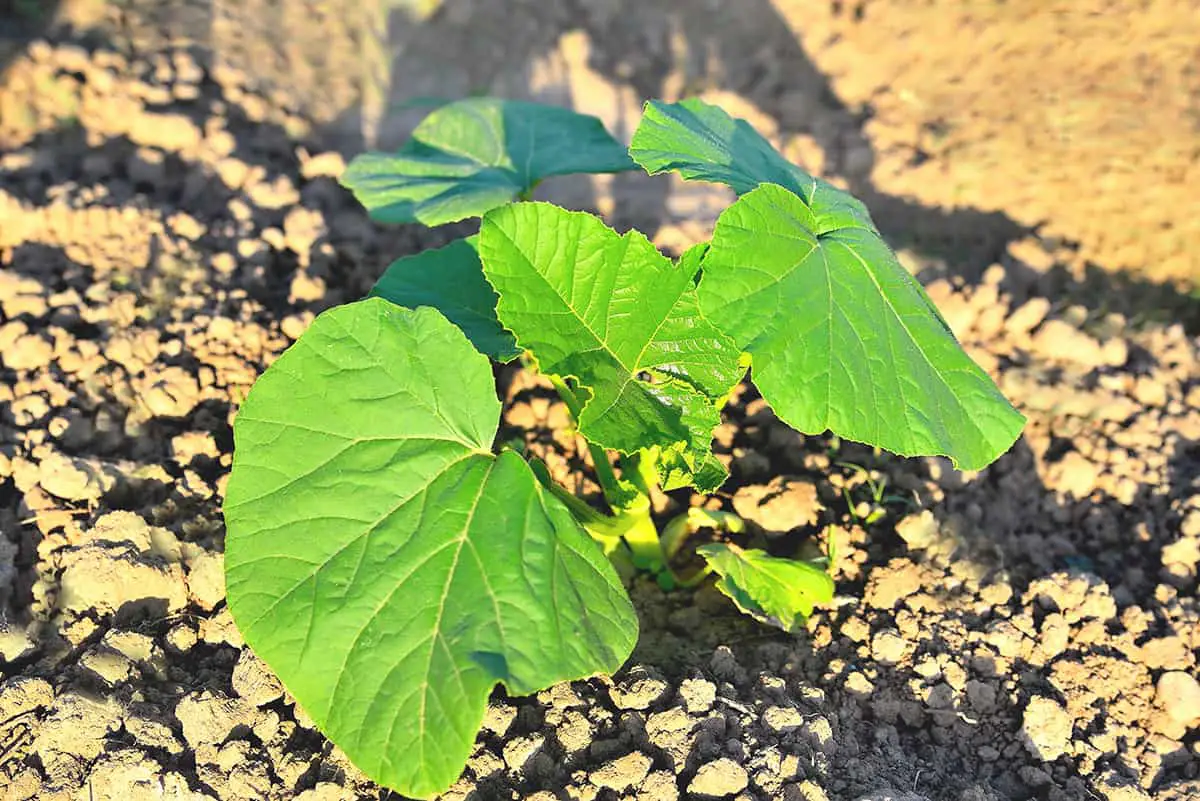
Pumpkins are considered full-sun plants, which means they perform best when exposed to the full intensity of sunlight. If you can provide a location in your garden that receives full sun for most of the day, your pumpkin plants are likely to grow vigorously and produce healthy fruits. At a minimum, pumpkin plants need to receive between 6 to 8 hours of sunlight each day, but more is better.
When a pumpkin plant gets full sun all day long, it is more likely to bloom profusely and, therefore, produce a greater amount of pumpkins. Plant your pumpkin vine in an open, sunny spot where it won’t be shaded by any larger plants, tall trees, nearby buildings, or fences.
You can also help pumpkin plants to receive the maximum amount of sun by thinning out pumpkin seedlings when young; this is because when the vines are grown too close together, the leaves can create shade for other leaves, preventing the sun from reaching the lower leaves.
Are Pumpkin Plants Shade Tolerant?
While pumpkin plants thrive in full sun, they can tolerate partial shade to some extent. However, if they receive less than 6 hours of direct sunlight, they may produce fewer flowers and smaller fruits. The climate can affect the plant’s ability to tolerate shade, with those grown in hotter climates benefitting from some afternoon shade.
Pumpkin plants are suitable for growing outside in USDA hardiness zones 3 to 8, but If you’re at the higher end of this scale in an area with intense afternoon heat, pumpkin plants can fare best when receiving morning sun and some shade during the hottest part of the day in the afternoon.
This can help prevent sunscald on the fruits and reduce stress on the plants. Excess heat is a cause of premature flower death on pumpkin plants, so in high heat levels, it can be beneficial to create some shade in the afternoon while ensuring the plant still receives a minimum of 6 hours of direct sun during the morning.
Can You Grow Pumpkin Plants Indoors?
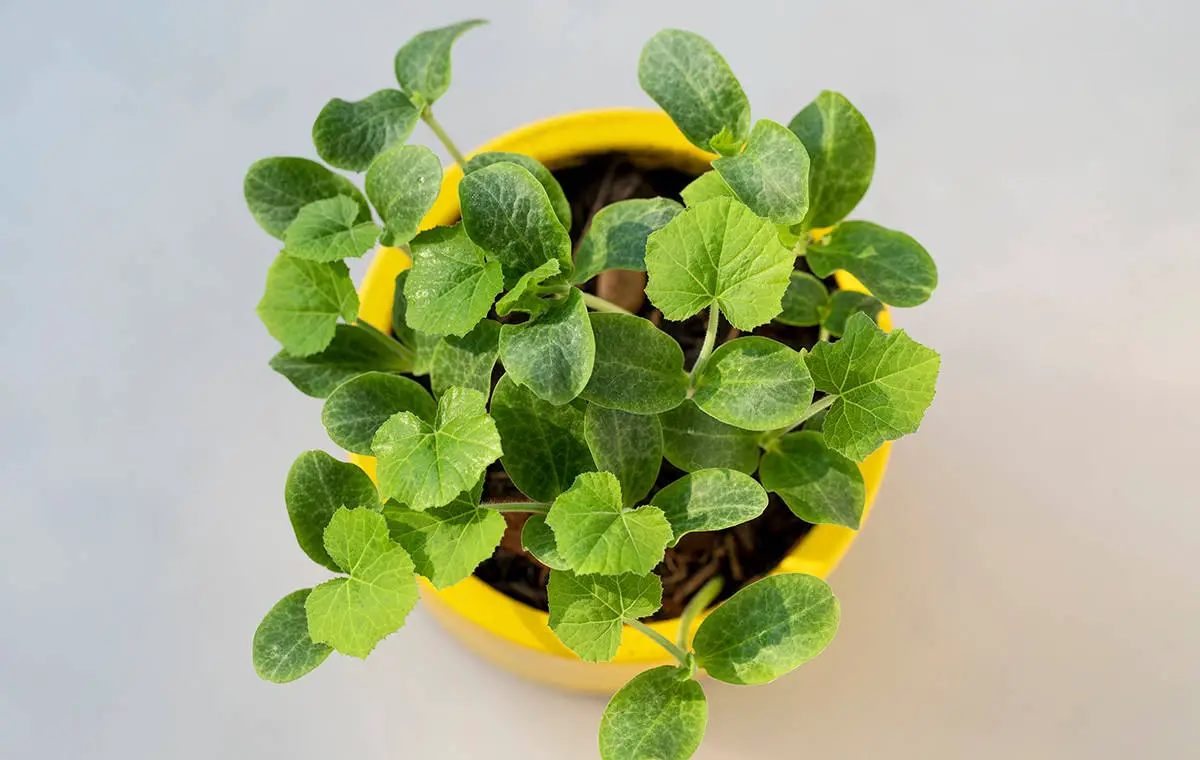
Pumpkin plants can be gron indoors as long as you have sufficient space and meet their care needs. If you’re growing pumpkins indoors or in a greenhouse, you may need to supplement natural sunlight with artificial lighting. High-intensity grow lights, such as high-pressure sodium (HPS) or metal halide (MH) lights, can provide the necessary light intensity for pumpkin plants to thrive.
Pumpkin plants are sensitive to the duration of light and darkness, so this will also need to be monitored if you are using grow lights to help care for pumpkin plants indoors. They require long daylight hours to grow properly, so you should provide at least 14-16 hours of light per day to make up for the lack of natural light.
You can use timers to regulate the light cycle for consistency because sudden changes in light timings can stress the plants and affect their growth. Pumpkin plants benefit from a full spectrum of light, including blue for vegetative growth and red for flowering and fruiting.
Many modern LED grow lights are designed to provide the full spectrum of light required for plant growth, but you should check this before purchasing a grow light. You will also need to ensure that the light source is at the appropriate distance from the pumpkin plants.
If placed too close, the grow light can cause light burn on the foliage of the pumpkin plant, while if it is positioned too far away, it may not provide sufficient light to meet the plant’s needs. You can also consider using reflective materials in your growing area to maximize light distribution. This can include white walls, reflective films, or grow tents with reflective interiors.
Do Pumpkin Light Levels Affect Care?
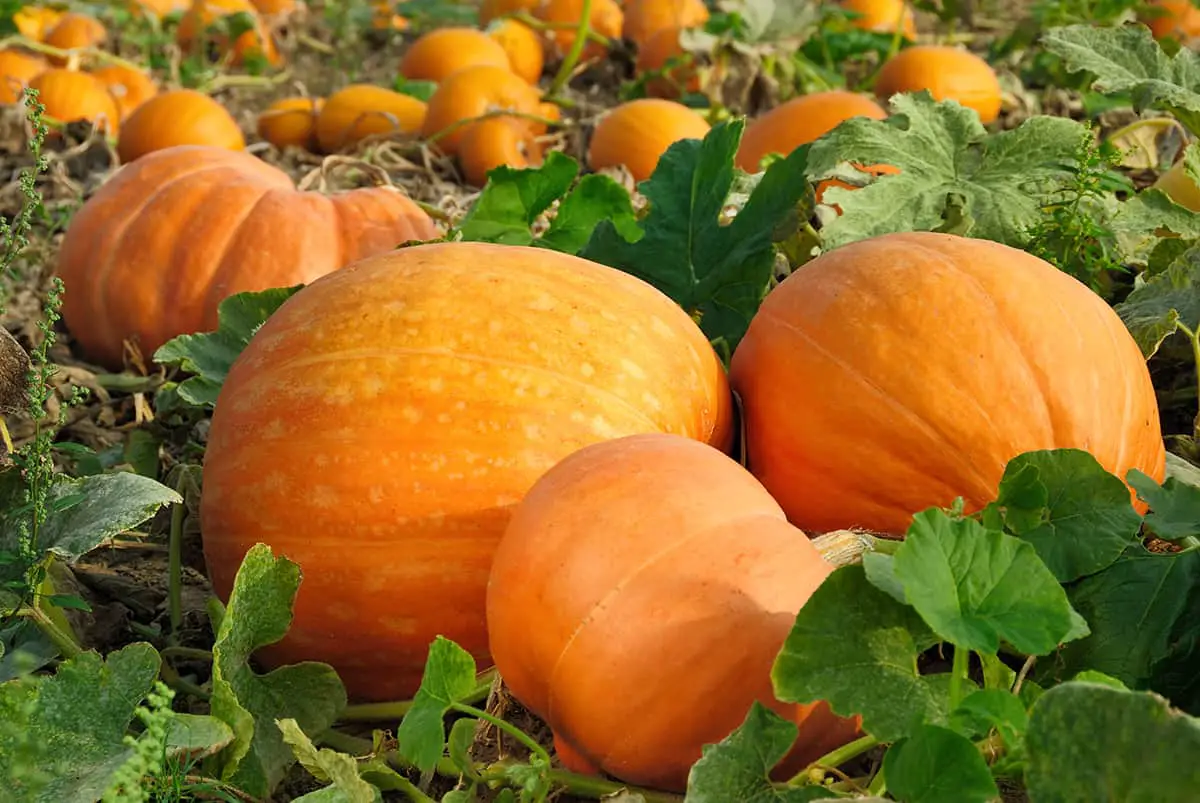
The level of light a pumpkin plant receives can affect the type of care you give it. This is because when a pumpkin plant is grown in full sun, the soil will also be in full sun, and as a result, it is likely to dry out more quickly compared with soil that is shaded. This means that a pumpkin plant growing in full sun is likely to need to be watered more often or more heavily.
A pumpkin plant also uses more energy when grown in full sun, so it will require higher levels of moisture. When pumpkin plants are grown in a partially shaded position, they will typically need to be watered less. To get the watering level just right, pay attention to the condition of the soil. The soil should not be allowed to completely dry out, and instead should be consistently moist.
You should also be careful not to overwater the pumpkin plant, as this can lead to root rot. If you want to make the water you give to your pumpkin plant last longer, apply a layer of mulch over the soil. This will insulate the soil and help to prevent moisture evaporation, especially in hot and sunny areas.
A layer of straw over the soil can also have a mulching effect and decrease the frequency with which you need to water the pumpkin plants, and it can also help to protect pumpkin fruits against rotting since it provides a layer between the fruits and the wet soil.
